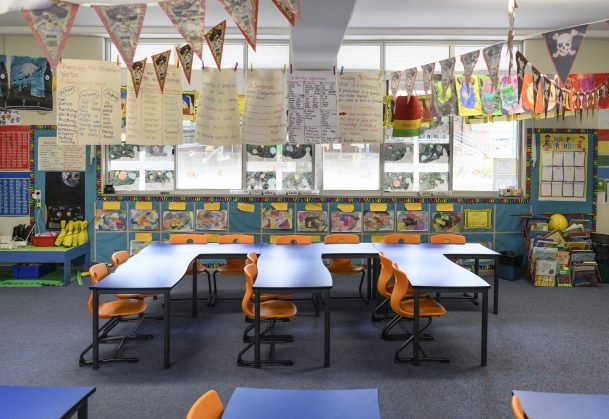While a lot of artwork, visual aids, maps, toys, and many other colorful materials are a common sight in kindergarten as well as elementary classrooms, recent studies have shown that this can actually be a distraction to the kids! And when the kids are distracted, their learning is compromised!
Based on research published in a journal of the Association for Psychological Science, Psychological Science, researchers found that kids are more distracted in a heavily decorated classroom than in a simple one.

Photo Credit: Psychological Science
Anna V. Fisher, Karrie E. Godwin and Howard Seltman of Carnegie Mellon University concluded based on observations that young children spend more time off-task than what they were supposed to do.
Six introductory science lessons were prepared for 24 kindergarten pupils who participated in the study. The kids were unfamiliar with the science topics.
The children were placed in laboratory classrooms, with three lessons held in a heavily decorated classroom while the other three were done in a simple classroom with few visual aids.

Photo Credit: Psychological Science
The Psychology researchers found out that instead of focusing on the task, the children spent more time studying or playing with the visual aids and posters in the heavy decorated classroom. Though they showed learning in both types of classroom, they appear to have learned more in the simpler classroom.
Based on test scores, the kids got 42% correct in the heavily decorated classroom while they got 55% correct marks in the simple classroom.
Further Studies
Because children spend several hours in the classroom, does this mean decorations and visual aids should be removed based on the findings? Not so fast!

Though the rate of off-task behavior is higher (38.6% time spent off-task) than in a simple classroom (28.4% time spent off-task), the researchers believe their study is only a stepping stone to more research.
“We were also interested in finding out if the visual displays were removed, whether the children’s attention would shift to another distraction, such as talking to their peers, and if the total amount of time they were distracted would remain the same,” Godwin explained.
The researchers hope that more studies will be performed in real classroom settings and that these findings would help teachers and schools formulate proper guidelines to design their classrooms for optimum learning.
Source: Psychological Science



